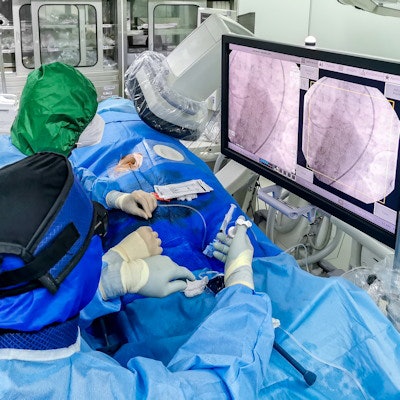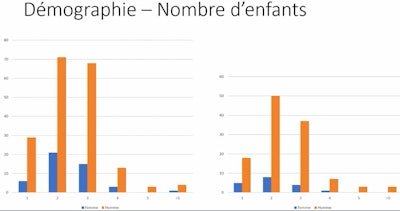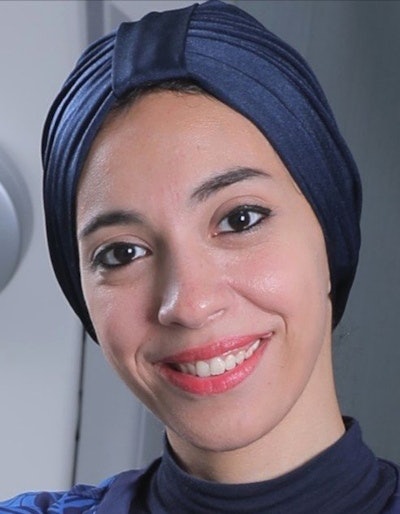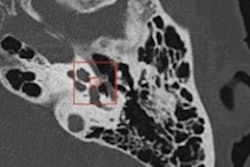
Gender is not an obstacle to pursuing a career in interventional radiology (IR), but men and women perceive different hurdles to IR practice, according to a survey presented on 9 October at the French national congress, Journées Francophones de Radiologie (JFR).
The four-minute online survey about the attractions of, and obstacles to, IR, was conducted in Spring 2021 by the French Society of Radiology (SFR) Federation of Interventional Radiologists (FRI). The results are being disseminated now to SFR members who work in France, French radiology residents, French-speaking foreign radiologists collaborating with the SFR, and foreign non-francophone radiologists collaborating with the SFR.
"Obstacles are perceived by both men and women such as continuity of care, remuneration, administrative duties, and competition with colleagues, but women experience specific obstacles such as management of pregnancy and the sentiment of male-female inequality," said Dr. Vania Tacher, PhD, a radiologist from University Hospital Henri Mondor in Créteil. "We have to promote interventional radiology earlier in medical studies, during the first cycle or even before."
Survey details
The response rate was 305 (4%) responses from a total of 8,645 SFR members. Of the respondents, 66 (22%) were women and 239 (78%) were men. Of these radiologists, the majority worked in the public sector, with a smaller percentage in the private sector and an even smaller percentage indicating mixed activity. Of the female radiologists, 33 (50%) had worked in IR or advanced IR, and among the male respondents, 159 (67%) had worked in IR or advanced IR.
Most respondents said they had discovered their calling to be a radiologist during their second cycle of medical studies and that their interest in IR had arisen during residency.
Among the studied population, some radiologists said they had given up on the idea of becoming an IR doctor. One (3%) of the 33 female respondents had dropped the idea, citing inequality between men and women in the profession as a reason. One (1%) of the 80 male respondents had also dropped the idea, citing absence of hierarchical support and absence of a mentor as a reason.
Among those who started a career as an interventional radiologist but stopped, the number was higher, both for men and women. Around a quarter of the female interventional radiologists (8 out 33, or 24%) stopped this activity, citing male versus female inequality, while 49/80 (61%) stopped IR activity due to lack of hierarchical support and mentors.
There was little difference in the marital status of respondent radiologists and interventional radiologists (IRs), with around 80% to 90% of male and female radiologists and IRs being married. The majority of the studied radiologists had children (46/66, 70% female respondents; 188/239, 79% male respondents), but there were fewer female IRs with children than male IRs (18/33, 55% vs. 118/159, 74%).
 Demographics: number of children (above) and family situation (below). In the above figure, the left chart is for all radiologists, while the right chart is for IR doctors only (blue bars, women; orange bars, men). RIA = advanced IR. Courtesy of SFR-Fédération de Radiologie Interventionnelle.
Demographics: number of children (above) and family situation (below). In the above figure, the left chart is for all radiologists, while the right chart is for IR doctors only (blue bars, women; orange bars, men). RIA = advanced IR. Courtesy of SFR-Fédération de Radiologie Interventionnelle.In terms of the number of children, both male and female IRs overall had fewer children than all radiologist respondents, but the difference was more striking for female IRs.
Also, 8/25 (25%) worked while they were pregnant, and 6/22 (27%) had the impression that they were penalized at work for being pregnant because they could no longer enter the IR rooms. None of the respondents felt happy about practicing interventional radiology while pregnant.
On-call work and professional hurdles
Another difference was seen in the percentage of radiologists performing on-call work.
Of the female IR respondents, 20/33 (61%) were involved in duty rosters, while 120/159 (75%) of male IR respondents were involved in on-call work.
When asked about the restrictions of on-call work on their private lives, opinions were similar between men and women, the majority stating there was slight to moderate impact, but with a slightly more negative opinion provided by women. For those with children, women felt more restrictions from on-call work on their family organization than did men.
Both women (25/33, 76%) and men (107/159, 67%) cited obstacles to IR practice. For women, the key obstacles in order were a sense of inequality between men and women, insufficient pay, heavy administrative duties (justification for acts, etc.), competition with colleagues from other disciplines. For men, the key obstacles were insufficient pay, heavy administrative duties, and stress.
Other reasons in order listed by women IRs were absence of support and mentorship, incompatibility with private life, battles with administration, and feelings of incapacity. On the other hand, men listed the following factors (in order): incompatibility with private life, lack of support and mentorship, difficulties accessing the IR rooms, and competition with colleagues from other disciplines. In last places for perceived obstacles, women cited stress and long interventions while men cited feelings of incapacity and lack of knowledge about the profession.
As for gender being an obstacle to IR, the response was overwhelmingly "no" by both men and women.
Of the 33 female IRs, 14 (42%) perceived specific obstacles to IR experienced by women and these included problems being involved in the continuity of patient care, timetables, availability, pregnancy, and family life.
On a positive note, both male and female radiologists overwhelmingly stated they would promote IR to other radiologists and the subgroup of IR said that they actively recommended and promoted their profession.
The global situation
At the same JFR session, Dr. Rana Tarek Khafagy, IR consultant from Ain Shams University Hospital in Cairo, presented details about the status quo across the world, notably in the Middle East.
Historically, women IRs have been under-represented throughout the world, e.g., accounting for only 10% of IR consultants in the U.K. in 2016, despite 50% of medical graduates being female, she noted. In 2018, in the U.S. the ratio was similarly low, while in Canada one in three radiologists is female but only one in 10 IRs is female.
 Dr. Rana Tarek Khafagy. Courtesy of the Arab Journal of Interventional Radiology.
Dr. Rana Tarek Khafagy. Courtesy of the Arab Journal of Interventional Radiology.Tarek also pointed to Australia, where according to the national society's latest census, no female IRs or female interventional neuroradiologists could be identified, compared with 44 and 14 men, respectively.
As healthcare expands in the Middle East, more female IRs are in demand by hospital administrations, and this is mainly due to female patient preference for female physicians, Tarek continued. Based on a 2018 survey in Egypt, women accounted for 5.9% (6/101) of IR consultants, 11.7% (10/85) of IR fellows, and 34.4% (21/61) of IR residents.
In 2020, Tarek and her colleagues conducted a survey across Middle East countries asking open-ended questions about the experience of over 50 female IRs when pursuing their careers. The survey revealed that radiation exposure, pregnancy- and maternity-related issues, and unsupportive husbands were the key concerns that might limit recruitment of the new generation of women IRs.
In addition, 50% of the respondents believed male fellows and residents were given more access to IR consultants and hands-on experience than women. Despite this, female medical graduates were showing more interest in IR, particularly in Egypt, while Tarek and her colleagues aimed to promote more knowledge and awareness of radiation exposure levels during practice, which in reality is similar to background radiation dose.
"Pilots and flight attendants are exposed to higher radiation doses than interventional radiologists," she noted. "Fluoroscopic procedures do not result in adverse outcomes for physicians or their offspring."
While IR is still a male-dominated specialty the number of female IR residents is increasing as is their remit -- Tarek pointed to how she led bronchial and prostate embolizations, among other procedures.
"Just because in the Arab world, female patients ask for female IRs to treat them, this doesn't mean they should just stick to women's health-related procedures. Ultimately the goal is to make high-quality care available to as many patients as possible. Giving them the option of who treats them is a bonus," she noted.



















